Spiti Valley in Winter: Explore Beautiful Indian Gem in 2025
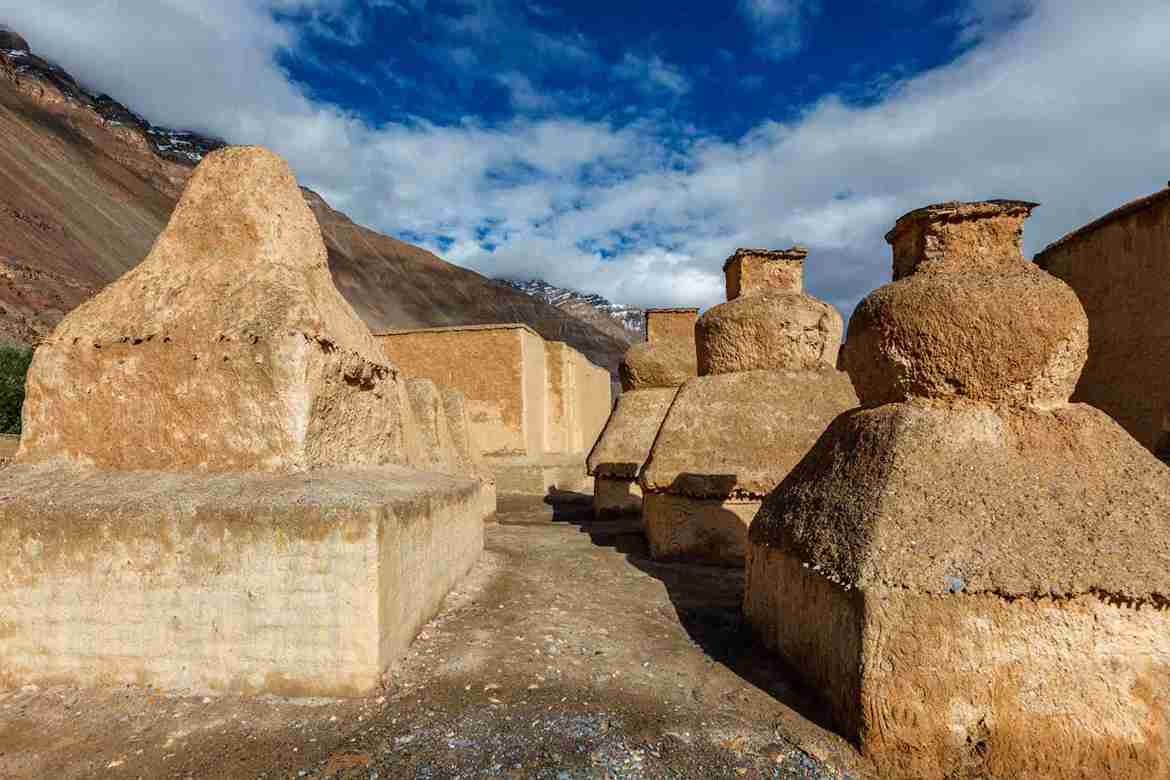
Nestled in the heart of the Himalayas, Spiti Valley transforms into a winter wonderland, offering a unique and enchanting experience for those seeking adventure off the beaten path. Spiti Valley in winter unveils a serene landscape blanketed in pristine snow, with its rugged mountains, ancient monasteries, and traditional villages taking on a surreal beauty. The Spiti winter tour beckons intrepid travelers to explore this remote region when it is draped in a glistering white coat, presenting a mesmerizing contrast to the stark brown hues it boasts during other seasons.
Visiting Spiti in winter is a journey into tranquility and isolation, as the snow-covered roads and frozen rivers create a serene atmosphere that captivates the senses. The Spiti winter tour is not for the faint-hearted, but for those who dare to venture into the crisp, cold air, there are rich rewards. Experience the warm hospitality of the locals, witness the unique winter rituals of the monasteries, and marvel at the breathtaking landscapes that seem to belong to another world entirely. Spiti in winter is a testament to the raw beauty of nature and the resilience of the human spirit in the face of challenging conditions.
Whether you are a seasoned adventurer or someone looking for a break from the conventional tourist destinations, Spiti Valley in winter promises an unforgettable experience. Embrace the tranquility of this snow-clad haven, discover the region’s cultural richness, and embark on a Spiti winter tour that will leave you with memories etched in the snow-covered landscapes of this Himalayan gem.
Why travel to Spiti Valley in Winter?

Embarking on a journey to Spiti Valley in winter offers a magical escape for those seeking a unique and offbeat adventure. The pristine beauty of Spiti Valley in winter, especially during January and December, presents a compelling allure for travelers looking to explore beyond the ordinary. Here are several reasons why planning a Spiti winter tour is a remarkable choice:
- Snow-laden Landscapes: Visiting Spiti Valley in winter means witnessing a breathtaking transformation as the entire region is blanketed in a shimmering coat of snow. The landscape takes on a surreal quality, with snow-covered peaks, frozen rivers, and quaint villages creating a picturesque winter wonderland.
- Peaceful Serenity: Experience the tranquility that comes with the off-season charm of Spiti. The winter months bring a serene hush to the valley, allowing travelers to enjoy the beauty of the surroundings in peaceful solitude, far removed from the bustling crowds of the peak tourist season.
- Unique Cultural Experience: A Spiti winter tour provides the opportunity to witness the unique winter rituals and festivities of the monasteries. The local culture takes on a distinctive charm during this season, offering travelers an authentic and enriching cultural experience.
- Challenging Adventure: For adventure enthusiasts, the challenge of navigating through snow-covered roads and frozen terrain adds an extra layer of excitement to the trip. It’s a chance to test one’s mettle against the elements and create lasting memories of overcoming winter obstacles in the high Himalayas.
- Warm Local Hospitality: Despite the harsh winter conditions, the locals in Spiti Valley are known for their warm hospitality. Travelers on a Spiti winter tour will be welcomed with open arms, and the cozy homestays offer a respite from the cold, making the experience even more memorable.
- Photographer’s Paradise: Capture the ethereal beauty of Spiti Valley in winter through your lens. The soft, diffused light on the snow, the clear blue skies, and the dramatic landscapes make it a paradise for photography enthusiasts, offering countless opportunities for stunning shots.
- Exclusive Experience: Travelling to Spiti Valley in winter provides an exclusive experience, as the number of tourists is significantly lower. This means a more intimate connection with the surroundings and a chance to savor the beauty of Spiti winter tour in a way that few get to experience.
Things to Do in Spiti in Winter
Winter Treks
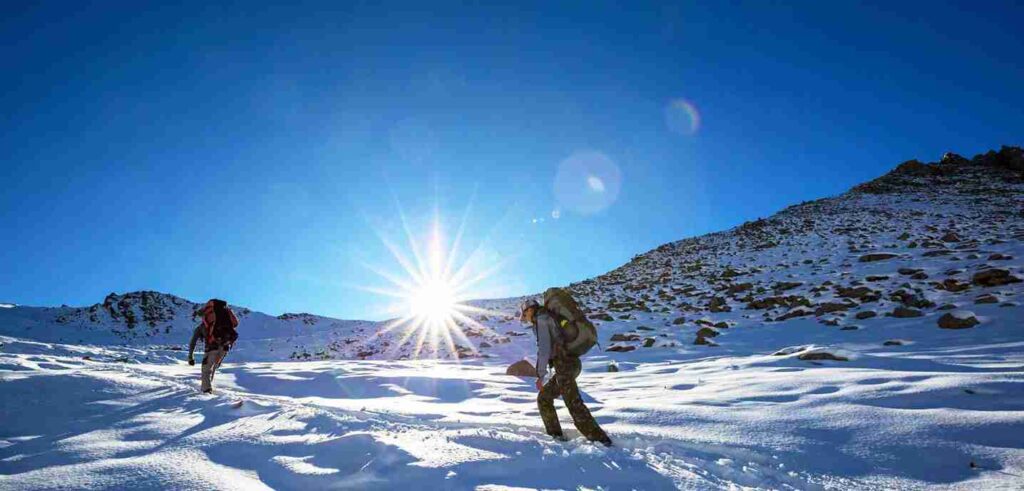
Explore the snow-covered trails of Spiti Valley in winter by engaging in invigorating treks. The crisp mountain air and pristine landscapes make December and January ideal months for trekking adventures. Popular trails include the trek to Dhankar Lake, providing breathtaking views of the frozen terrain.
Monastery Visits

Discover the cultural richness of Spiti Valley in December by visiting ancient monasteries like Key Monastery and Tabo Monastery. The serene winter atmosphere adds a mystical charm to these spiritual centers, allowing for a more intimate and contemplative experience.
Frozen Lakes Exploration

Experience the surreal beauty of frozen lakes in Spiti winter tour. Chandra Tal and Dhankar Lake, among others, transform into captivating ice-covered expanses. Walking on these frozen lakes is a unique and exhilarating experience, offering a different perspective of Spiti Valley in December.
Homestay Hospitality
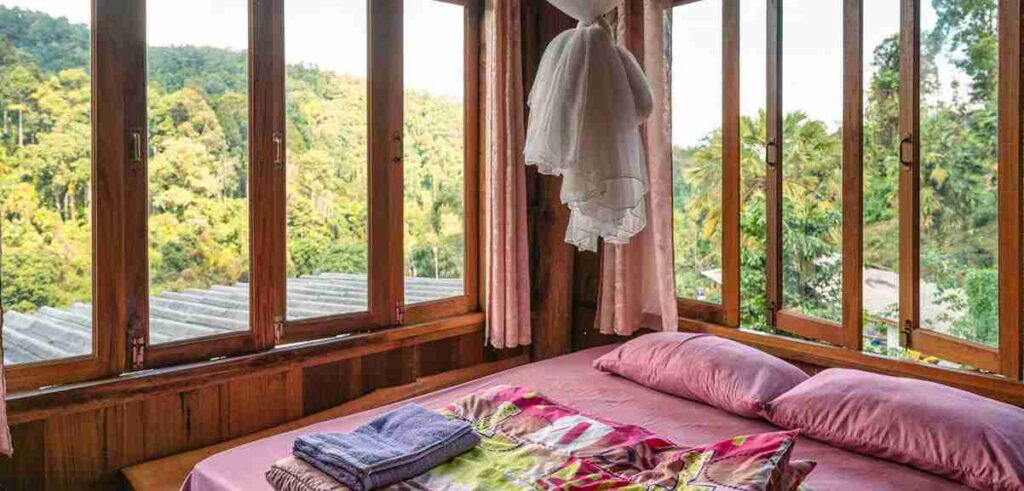
Embrace the warmth of Spiti’s hospitality by staying in traditional homestays. December and January are perfect months to experience the cozy ambiance of local homes, where you can share stories around a fireplace and savor authentic Spitian cuisine.
Attend Winter Festival

Immerse yourself in the local culture by participating in winter festivals celebrated in Spiti Valley in December and January. Experience traditional dance, music, and rituals that are unique to the winter season, providing a glimpse into the vibrant cultural tapestry of the region.
Stargazing in the Cold Desert
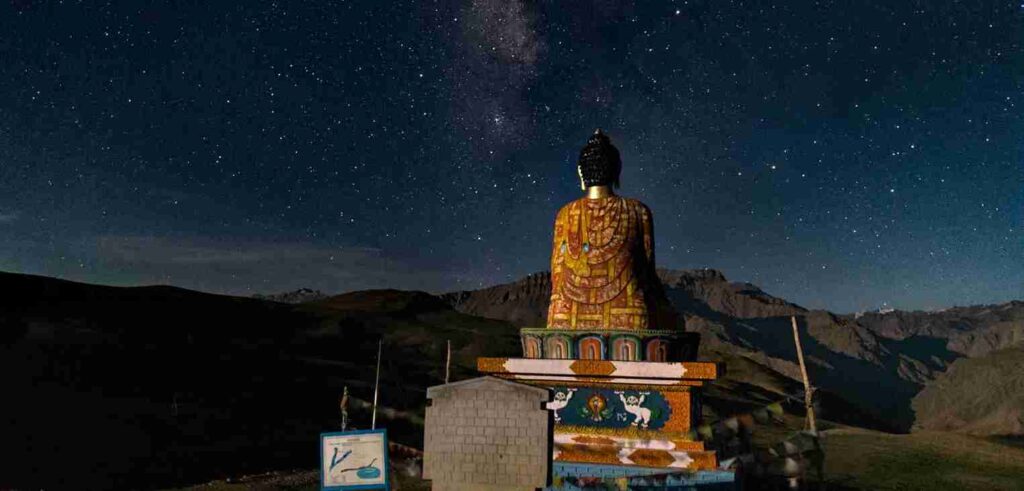
With clear winter skies, Spiti Valley in December offers an excellent opportunity for stargazing. The high-altitude location and minimal light pollution create an ideal environment to witness the celestial wonders. Bring along a telescope or simply lay back in the snow to marvel at the star-studded night sky during your Spiti winter tour.
Places to Visit in Spiti Valley in Winter Months
Kaza – Winter Wonderland Retreat
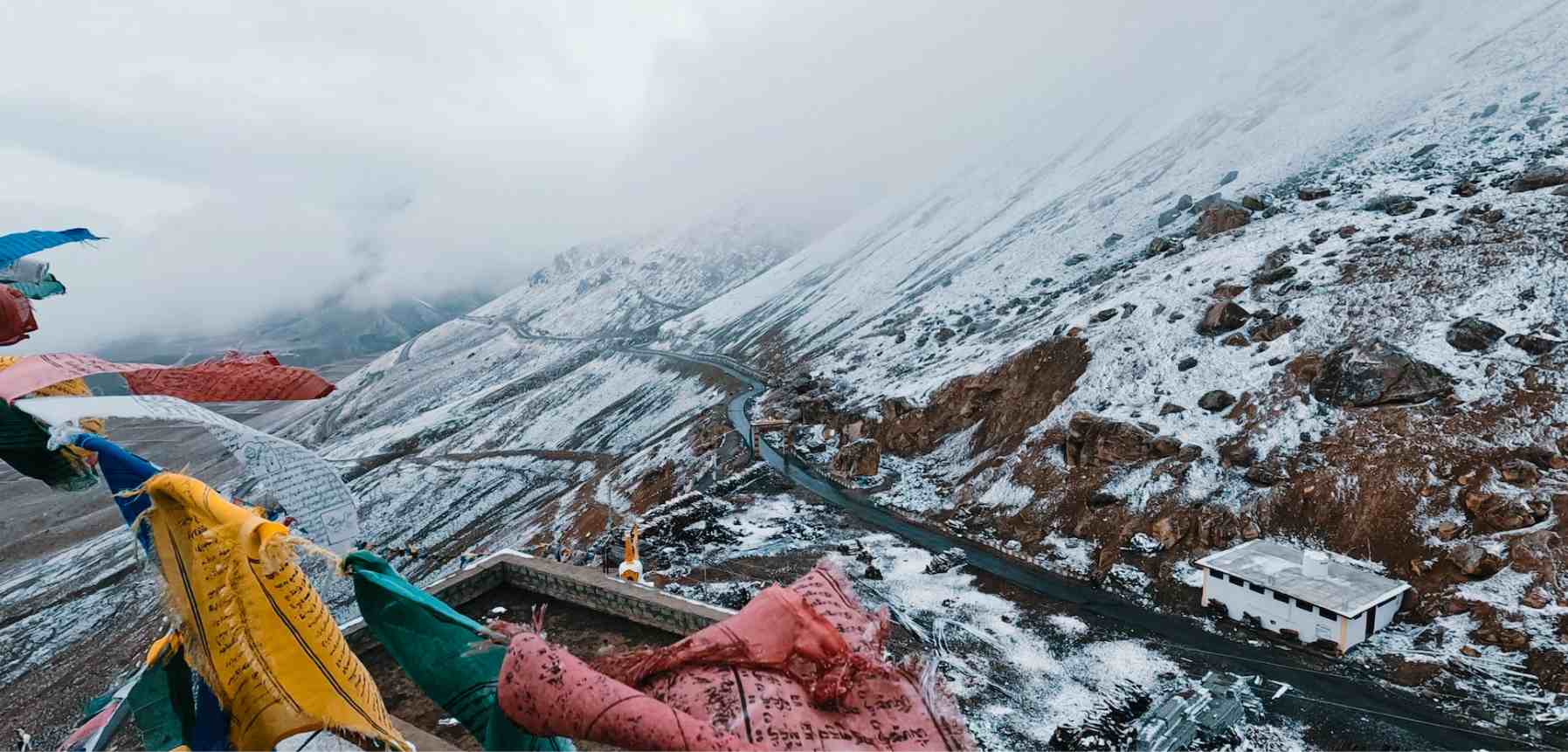
The administrative capital of Spiti Valley, Kaza is a must-visit destination during a Spiti winter tour. In December and January, the town wears a peaceful blanket of snow, offering a serene ambiance. Explore the local markets, ancient monasteries, and the iconic Key Monastery while enjoying the winter charm of Kaza.
Key Monastery – Snowy Spiritual Serenity
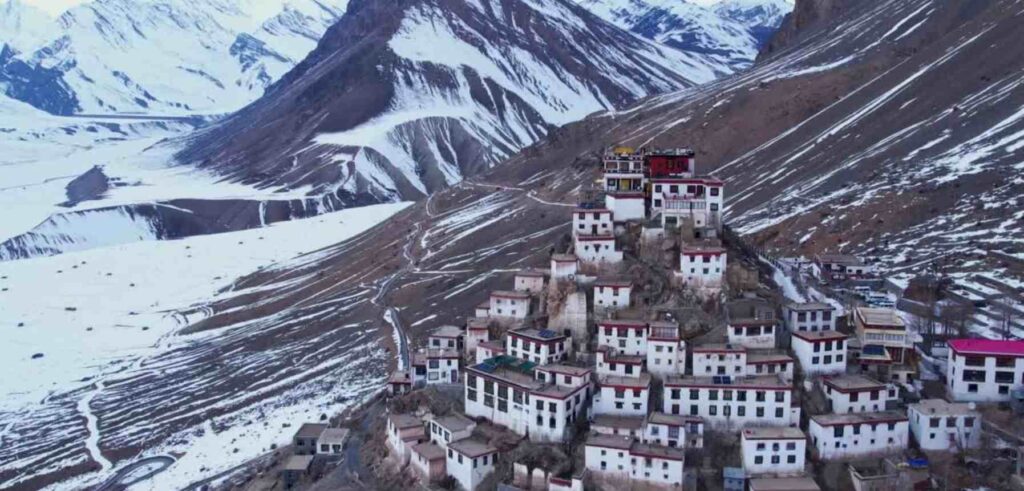
Perched atop a hill, the Key Monastery stands as an iconic symbol of Spiti Valley. In winter, the monastery becomes a tranquil haven surrounded by snow-covered landscapes. The mesmerizing views of the Spiti River winding through the valley add to the allure of this ancient spiritual retreat.
Tabo Monastery – Timeless Snowy Splendor
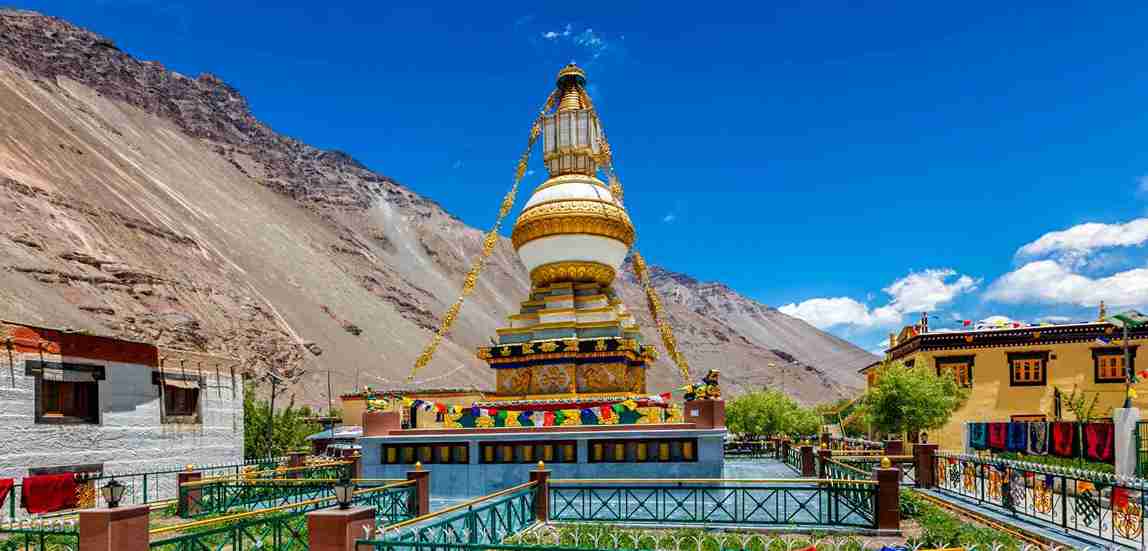
Known as the “Ajanta of the Himalayas,” Tabo Monastery is a UNESCO World Heritage Site with a history dating back over a millennium. Visiting Tabo in winter provides a unique experience, as the ancient mud-brick structures stand out against the backdrop of white snow, creating a surreal sight.
Dhankar Village and Lake – Winter’s Tranquil Embrace
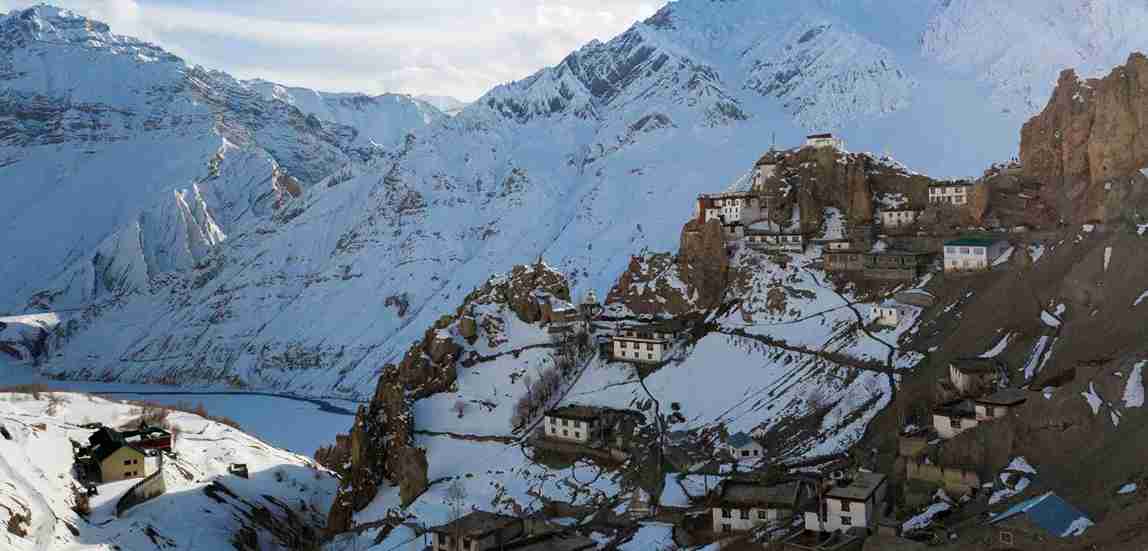
Explore the ancient Dhankar Village and its stunning lake in winter. The village, perched on a high cliff, offers panoramic views of the snow-covered valley. Dhanakr Lake, frozen during the winter months, presents an opportunity for a picturesque trek amidst the serene beauty of Spiti Valley in December.
Langza – December’s Delightful Charm
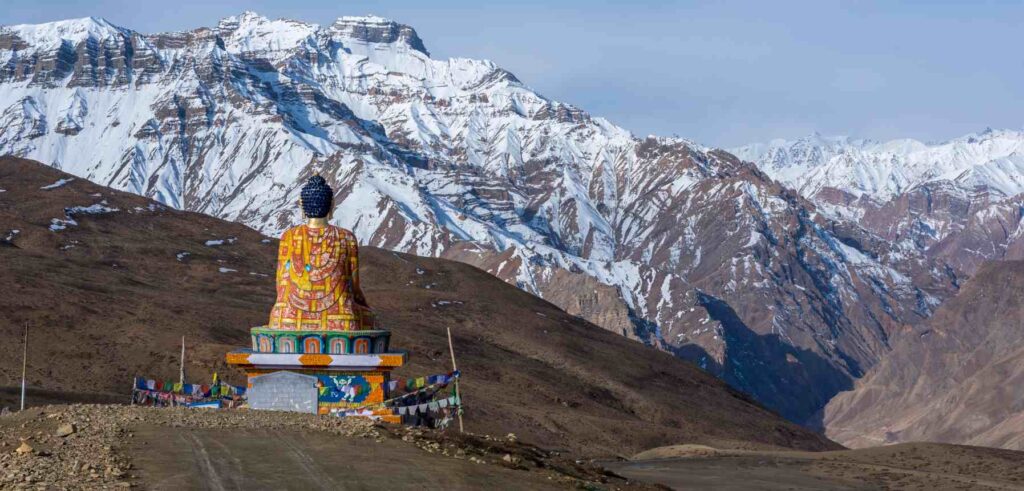
Known for its towering Buddha statue and fossil-rich grounds, Langza is a captivating village to visit through Spiti valley in December tour. The winter landscape enhances the charm of this high-altitude village, providing a unique experience for those seeking tranquility and natural beauty.
Chandratal Lake – January’s Icy Majesty
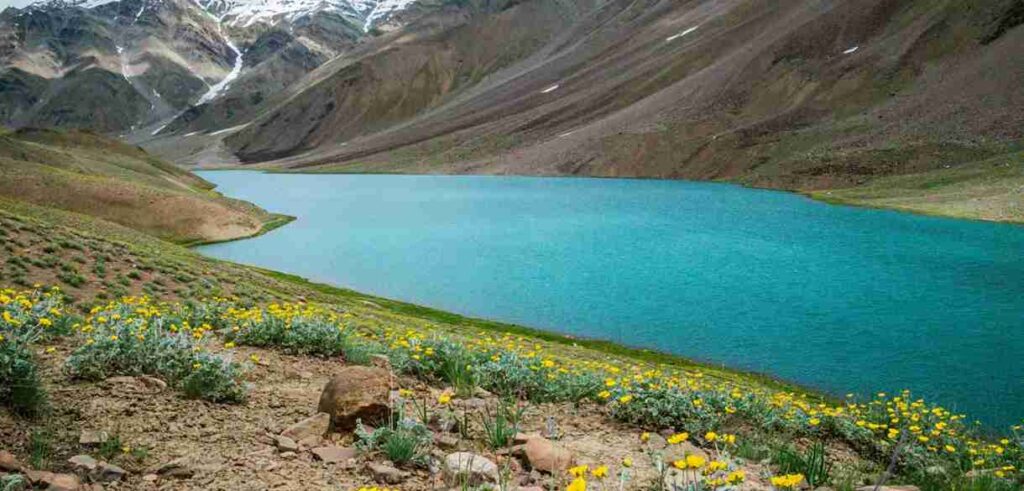
Although access can be challenging in winter, the frozen beauty of Chandratal Lake makes it a worthwhile destination for the adventurous. Surrounded by snow-capped peaks, the lake takes on a magical quality, and the peaceful solitude of the winter months adds to the allure of this high-altitude gem in Spiti Valley in December.
How to Reach Spiti Valley in Winter

Reaching Spiti Valley, especially during winter, requires careful planning and navigation through the snow-laden terrain. Here’s a simple guide with key pointers.
- By Road: The most common route is by road, with two primary approaches. From Shimla, take the Hindustan-Tibet Road (NH-5) passing through picturesque towns like Narkanda and Rampur. Alternatively, from Manali, traverse the Manali-Leh Highway, a thrilling but challenging journey that opens up only in late spring. Keep in mind that roads to Spiti in winter may be snow-covered, so a reliable vehicle and an experienced driver are essential.
- Nearest Airport: Bhuntar Airport in Kullu is the closest airport to Spiti Valley. From there, you can hire a taxi or take a bus to reach Manali and then proceed towards Spiti. Flights may be limited in winter, so it’s advisable to check schedules in advance.
- Public Transport: Buses from Shimla and Manali connect to Kaza, the main town in Spiti. However, bus services may be disrupted in winter due to heavy snowfall. Confirm schedules and availability before planning a Spiti winter tour.
- Private Vehicles: Consider hiring a private taxi or driving your vehicle. This provides flexibility and control over your itinerary, crucial in navigating the unpredictable winter conditions.
- Acclimatization: The high altitude of Spiti Valley requires acclimatization. Spend a day or two in Shimla or Manali before heading to Spiti to reduce the risk of altitude-related issues.
- Check Road Conditions: Before embarking on your journey to Spiti valley in December or January, check road conditions and weather forecasts. Some routes may be closed or challenging due to heavy snowfall, impacting travel plans.
Planning, staying informed, and ensuring a reliable mode of transportation are essential steps to reach Spiti Valley in winter safely.
Packing list while traveling to Spiti Valley in Winter
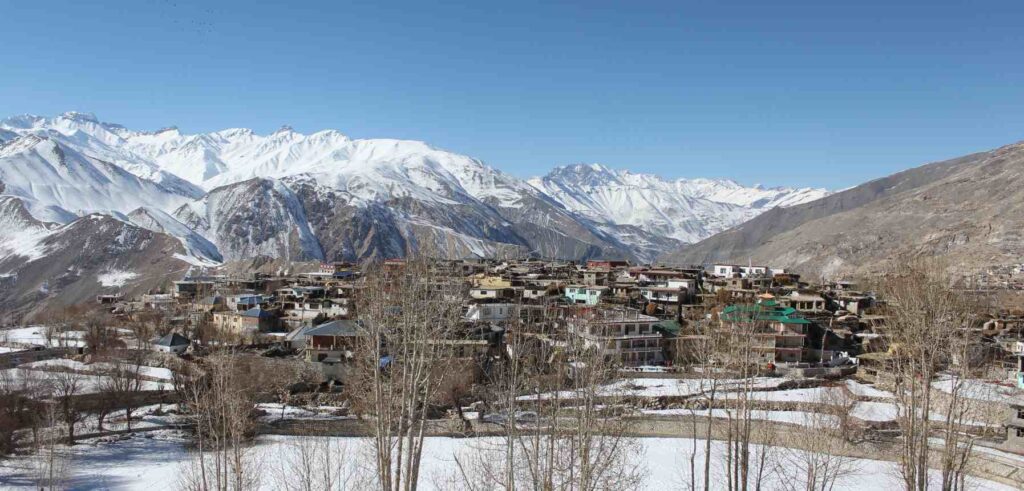
When preparing for a trip to Spiti Valley in winter, it’s crucial to pack wisely to ensure comfort and safety in the cold and snowy conditions. Here’s a simple packing list in easy-to-understand pointers:
- Warm Clothing Layers: Pack thermal innerwear, fleece jackets, and insulated outer layers to stay warm in the chilly Spiti winter temperatures. Multiple layers allow better insulation and flexibility based on the varying weather conditions.
- Heavy-Duty Winter Jacket: Bring a waterproof and windproof winter jacket to protect against the biting cold and potential snowfall during your Spiti Valley in December or January trip.
- Insulated Gloves and Hat: Keep extremities warm with insulated gloves and a hat. These are essential items to safeguard against frostbite in the freezing Spiti Valley in winter.
- Sturdy Winter Boots: Invest in waterproof and insulated boots to navigate through snow-covered paths comfortably. Sturdy footwear provides a better grip on icy surfaces during your Spiti winter tour.
- UV Sunglasses and Sunscreen: The high-altitude sun can be intense even in winter. UV sunglasses protect eyes from glare, while sunscreen prevents sunburn, particularly when surrounded by snow in Spiti Valley in December.
- Backpack with Essentials: Carry a backpack containing essentials such as water, snacks, a first aid kit, and personal documents. In winter, road conditions may vary, so having these basics ensures preparedness.
- Portable Charger and Power Bank: cold temperatures can deplete electronic device batteries quickly. A portable charger or power bank ensures your devices, including phones and cameras, stay charged during your Spiti winter tour.
- Medications and Health Supplies: Include any necessary medications and a basic health kit. The remote nature of Spiti Valley in winter emphasizes the importance of being self-sufficient in terms of health and well-being.
- Winter Accessories: Don’t forget to pack winter accessories like a scarf or neck gaiter to protect against the cold wind, as well as thermal socks for added warmth during your Spiti in winter adventure.
By prioritizing warmth, comfort, and preparedness, this packing list ensures a more enjoyable and safe experience when exploring Spiti Valley in winter.
Conclusion
Venturing into Spiti Valley in winter unveils a mesmerizing tapestry of snow-covered landscapes, ancient monasteries, and a serene tranquility that defines the essence of this Himalayan gem. A Spiti winter tour is not just a journey; it’s an immersion into a world where the stark beauty of the surroundings captivates the soul. The crisp mountain air, the warmth of local hospitality, and the unique experiences offered during a Spiti in winter adventure create memories that linger long after the journey ends.
As the snow blankets the rugged terrain, Spiti Valley in winter transforms into a pristine wonderland, beckoning adventures to witness its raw beauty. Whether it’s the challenging treks, the ancient monastic rituals, or the exclusive serenity, Spiti in winter offers a distinctive experience that sets it apart from other travel destinations. Embrace the cold, savor the unique culture, and relish the quietude – a journey to Spiti Valley in winter is a testament to the allure of untouched beauty and the indomitable spirit of exploration.

